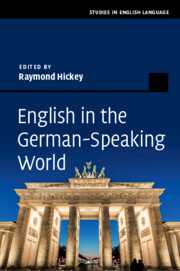Book contents
- English in the German-Speaking World
- Studies in English Language
- English in the German-Speaking World
- Copyright page
- Contents
- Figures
- Tables
- Contributors
- Preface
- Chapter 1 English in the German-Speaking World: The Nature and Scale of Language Influence
- I The Status of English
- II The Transmission of English
- Chapter 5 The History of English Instruction in the German-Speaking World
- Chapter 6 English Language (Teacher) Education in Germany after 1945
- Chapter 7 Supporting English Medium Instruction at German Institutions of Higher Education
- III Domains and Features of English
- IV Beyond Germany
- Index
- References
Chapter 7 - Supporting English Medium Instruction at German Institutions of Higher Education
from II - The Transmission of English
Published online by Cambridge University Press: 11 November 2019
- English in the German-Speaking World
- Studies in English Language
- English in the German-Speaking World
- Copyright page
- Contents
- Figures
- Tables
- Contributors
- Preface
- Chapter 1 English in the German-Speaking World: The Nature and Scale of Language Influence
- I The Status of English
- II The Transmission of English
- Chapter 5 The History of English Instruction in the German-Speaking World
- Chapter 6 English Language (Teacher) Education in Germany after 1945
- Chapter 7 Supporting English Medium Instruction at German Institutions of Higher Education
- III Domains and Features of English
- IV Beyond Germany
- Index
- References
Summary
In the wake of the Bologna Declaration, the number of courses and programmes taught in English has been increasing continuously across European institutions of higher education (HEIs). Courses taught in the paradigm of English-Medium Instruction (EMI) or English as ‘the language of learning and teaching’ (LoLT; van der Walt and Klapwijk 2015) have begun to replace programmes taught in the national language(s) (cf. Björkmann 2013). The number of programmes taught entirely in English has increased by more than a factor of ten in Europe since 2001 and amounted to over 8,000 by 2014 (Wächter and Maiworm 2014: 36).
- Type
- Chapter
- Information
- English in the German-Speaking World , pp. 114 - 140Publisher: Cambridge University PressPrint publication year: 2019
References
- 2
- Cited by



